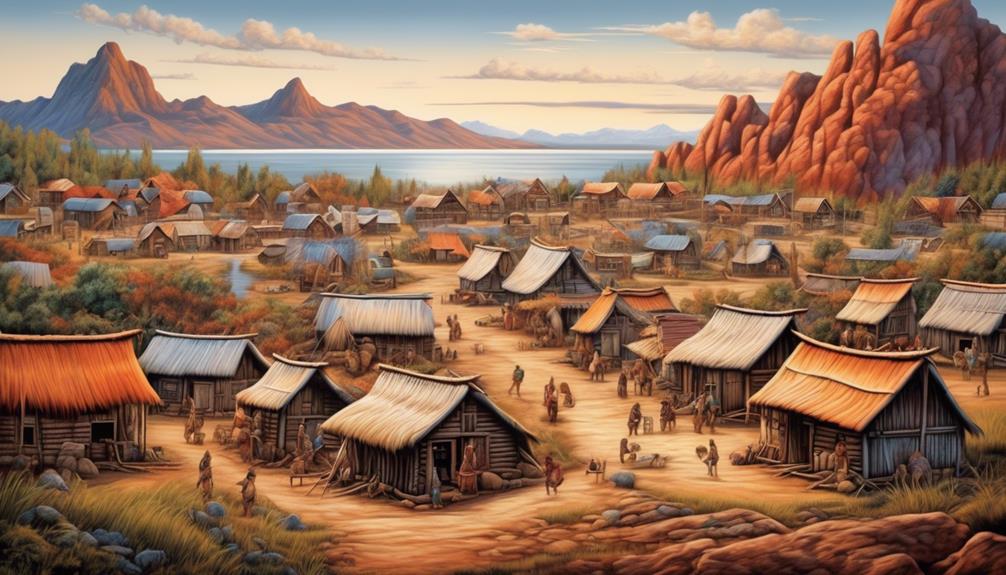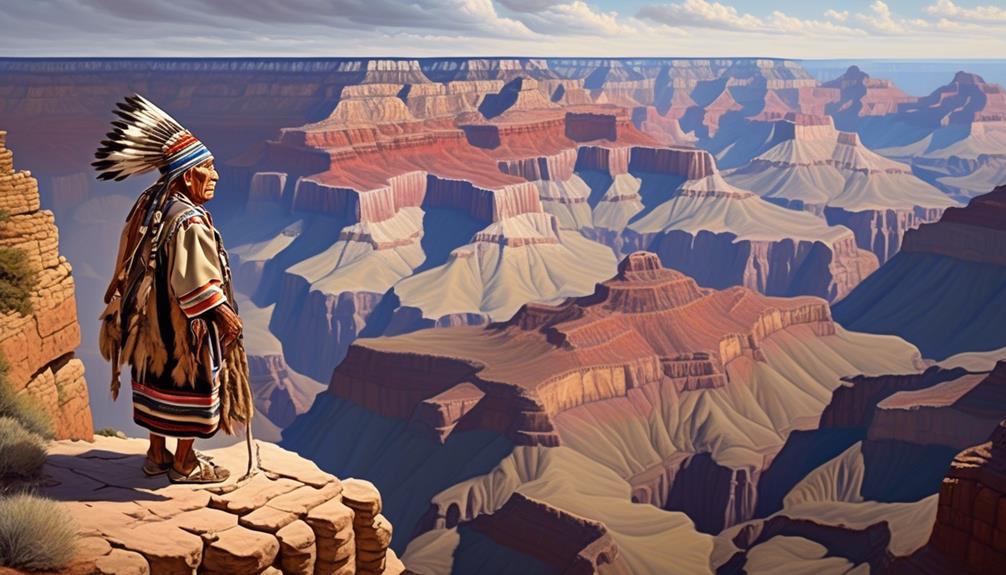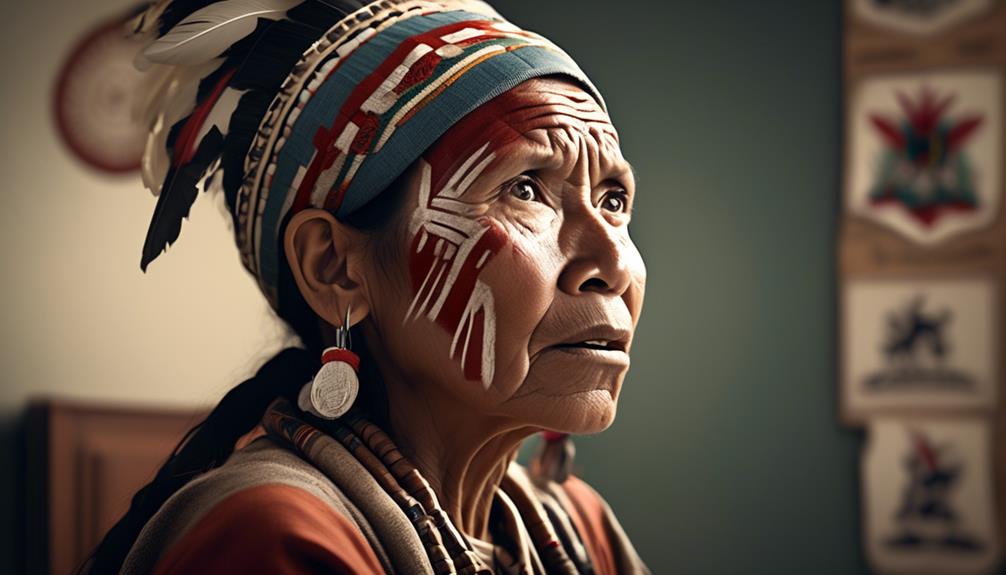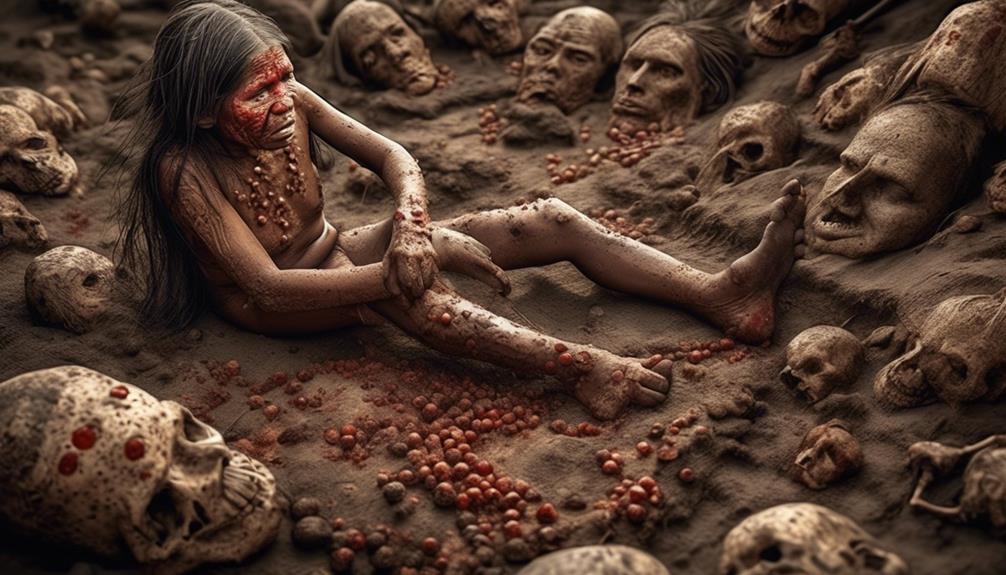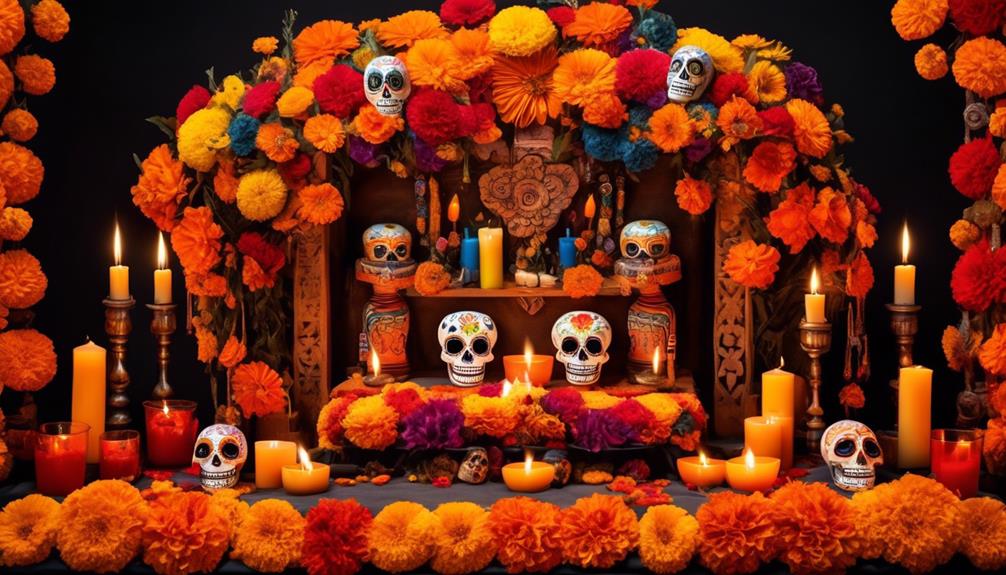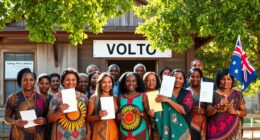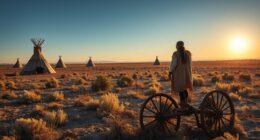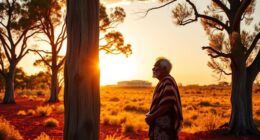Much like a forceful wave hitting the shore, the migration of settlers to the Northwest Territory deeply affected the native tribes in the area.
The interactions between settlers and indigenous communities were complex and multifaceted, leading to significant changes that continue to resonate to this day.
From the displacement of traditional lands to the erosion of cultural practices, the effects of settler colonization were far-reaching.
However, understanding the full extent of these impacts requires a closer examination of the historical, social, and economic factors at play during this pivotal period in American history.
Key Takeaways
- Settlers actively displaced indigenous nations from their ancestral lands, leading to a loss of economic base and cultural/spiritual connection to the land.
- Settlers imposed their culture and beliefs, suppressing indigenous traditions and resulting in the loss of indigenous languages, customs, and traditional knowledge.
- Trade relations with settlers led to exploitation and economic dependency, disrupting indigenous economic systems and depleting natural resources.
- Indigenous communities engaged in acts of resistance and formed intertribal alliances to collectively resist settler expansion, demonstrating resilience, defiance, and unity among indigenous nations.
Land Displacement and Loss
As settlers expanded into the Northwest Territory, they actively displaced indigenous nations from their ancestral lands, causing profound loss and disruption to their communities and way of life. The sovereignty challenges faced by indigenous nations were immense. Their inherent right to govern themselves and their lands was disregarded, leading to a systematic erosion of their autonomy.
This loss of control over their territories not only deprived them of their economic base but also deeply impacted their cultural and spiritual connection to the land. The intergenerational trauma resulting from this displacement has been enduring. It has manifested in high rates of poverty, substance abuse, and mental health issues within indigenous communities.
The trauma of being forcefully removed from their homelands has been passed down through generations, contributing to social and psychological struggles that persist today. Understanding the ongoing repercussions of land displacement is crucial in acknowledging the profound and lasting effects of settler colonialism on indigenous nations in the Northwest Territory.
Cultural Assimilation and Erasure

The impact of settlers on indigenous nations in the Northwest Territory led to not only land displacement and loss but also cultural assimilation and erasure, profoundly altering the fabric of indigenous communities and heritage. The process of cultural assimilation and erasure has had devastating effects on the preservation of traditional knowledge and practices of indigenous nations. The settlers' imposition of their own culture and beliefs led to the suppression and devaluation of indigenous traditions, languages, and customs. This resulted in a loss of identity and a disconnection from the rich heritage that had been passed down through generations. The table below outlines the detrimental effects of cultural assimilation and erasure on indigenous communities.
| Effects of Cultural Assimilation and Erasure |
|---|
| Loss of traditional knowledge and practices |
| Suppression of indigenous languages and customs |
| Disconnection from cultural identity and heritage |
The erasure of indigenous cultures not only deprived these communities of their identity but also hindered the broader society from benefiting from the wealth of traditional knowledge and wisdom that indigenous cultures possess. It is imperative to acknowledge and address the historical and ongoing impact of cultural assimilation and erasure on indigenous nations, striving to support cultural preservation and the revitalization of traditional knowledge.
Economic Impacts and Dependency
In considering the impact of settlers on indigenous nations in the Northwest Territory, we observe the complex web of economic impacts and dependencies that have shaped the course of history for these communities. Trade relations, often established under unequal power dynamics, led to exploitation and the imposition of settler-controlled economic systems. Indigenous nations found themselves in a position of dependency, where their traditional economic structures were disrupted, and they became reliant on trade with settlers for essential goods.
Resource extraction further deepened the economic impacts on indigenous nations. The depletion of natural resources due to settler activities not only disrupted the indigenous economic systems but also led to long-term environmental consequences. This exploitation of resources affected the ability of indigenous communities to sustain themselves and forced them to adapt to new economic realities imposed by the settlers.
The economic impacts of settler colonialism have had lasting effects on the indigenous nations of the Northwest Territory, shaping their economic dependencies and altering their traditional ways of life. Understanding these historical economic injustices is crucial in addressing the ongoing economic disparities and working towards a more equitable future.
Conflict and Resistance
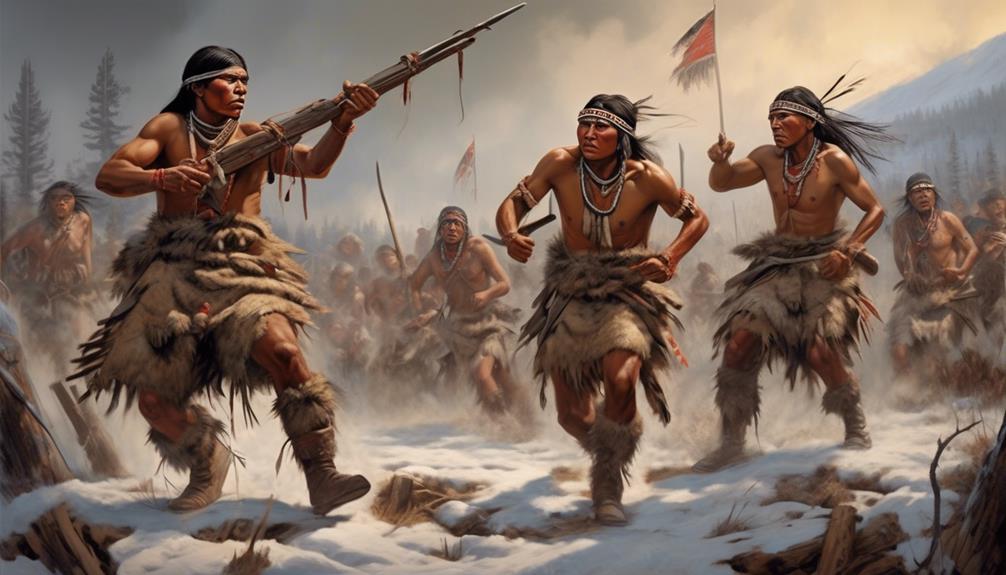
Amidst the encroachment of settlers and the disruption of their traditional ways of life, indigenous nations in the Northwest Territory found themselves engaged in acts of defiance and resilience. The impact of settler expansion led to the emergence of various resistance movements and the strengthening of intertribal alliances.
- Resistance Movements
Indigenous communities actively resisted the encroachment of settlers through a variety of means, including guerrilla warfare, raids on settlements, and strategic ambushing of supply convoys. These acts of resistance weren't only a means of defending their territories but also a way to assert their sovereignty and autonomy in the face of colonial aggression.
- Intertribal Alliances
The threat posed by settlers led to the formation of intertribal alliances as a means of collective resistance. Indigenous nations recognized the need to unite in the face of a common adversary, leading to the creation of alliances that transcended traditional tribal boundaries. These alliances not only facilitated coordinated efforts to resist settler expansion but also fostered a sense of unity and solidarity among diverse indigenous communities.
The responses of indigenous nations in the Northwest Territory to settler encroachment were marked by resilience, defiance, and the forging of new intertribal connections.
Long-Term Consequences and Healing
As we reflect on the enduring impact of settler expansion on indigenous nations in the Northwest Territory, we recognize the ongoing struggle for healing and the profound, long-term consequences that continue to shape their communities. The intergenerational trauma stemming from forced relocation, loss of traditional lands, and cultural suppression has left deep scars within indigenous communities. These wounds, passed down through generations, manifest in various social issues, including high rates of substance abuse, mental health challenges, and domestic violence. The legacy of settler colonialism has significantly disrupted the balance and harmony that once characterized indigenous ways of life.
However, amidst these challenges, there's resilience and a growing movement towards healing and restoration. Indigenous communities are actively engaging in cultural revitalization efforts, seeking to reclaim and preserve traditional knowledge, languages, and practices. This revitalization not only serves as a source of empowerment and pride but also as a pathway for healing intergenerational trauma. By reconnecting with their cultural heritage, indigenous nations are fostering a sense of belonging and identity while addressing the deep-rooted effects of historical injustices.
The journey towards healing is ongoing, but the resurgence of traditional knowledge stands as a testament to the resilience and determination of indigenous communities in the Northwest Territory.
Frequently Asked Questions
What Were the Specific Treaties and Agreements Made Between Settlers and Indigenous Nations in the Northwest Territory?
We understand the significance of treaty agreements between settlers and indigenous nations in the Northwest Territory. The land dispossession resulting from these agreements has had a lasting impact on the indigenous communities.
These treaties and agreements were often coercive and exploitative, leading to loss of ancestral lands and disruption of traditional ways of life. The consequences of these actions continue to shape the experiences of indigenous nations in the region.
How Did the Introduction of New Diseases by Settlers Impact the Health and Well-Being of Indigenous Populations?
When settlers introduced new diseases, the impact on Indigenous health was devastating. The settlers' influence led to widespread illness, decimating our communities.
The cultural assimilation forced upon us only exacerbated the suffering. It's like a storm that ravages everything in its path, leaving destruction and despair.
The toll on our well-being was immeasurable, and the scars of that time still haunt us today.
What Were the Social and Political Structures of the Indigenous Nations in the Northwest Territory Before and After the Arrival of Settlers?
Before the arrival of settlers, the indigenous nations in the Northwest Territory had well-established social structures and political systems.
Social structures were often based on kinship and communal living, while political systems varied but often involved democratic decision-making processes.
However, after the arrival of settlers, these structures were significantly disrupted, leading to widespread displacement, loss of autonomy, and the erosion of traditional governance systems.
What Role Did Missionary Efforts Play in the Cultural Assimilation and Erasure of Indigenous Traditions and Practices?
Missionary influence had a significant impact on cultural erosion and the erasure of indigenous traditions and practices. The relentless push for religious assimilation led to the suppression of traditional beliefs and practices, causing immense harm to indigenous communities.
The missionary efforts played a pivotal role in undermining the rich cultural heritage of the indigenous nations, perpetuating a cycle of erasure and assimilation that continues to affect these communities today.
How Have Modern Efforts for Indigenous Rights and Sovereignty Impacted the Long-Term Healing and Consequences of Settler Colonization in the Northwest Territory?
Modern efforts for indigenous rights and sovereignty have significantly impacted the long-term healing and consequences of settler colonization in the Northwest Territory.
Indigenous activism, healing practices, sovereignty movements, and cultural revitalization are crucial in addressing historical injustices.
Conclusion
As settlers moved into the northwest territory, they displaced indigenous nations from their land, eroded their cultures, and created economic dependency. This had long-term consequences, including ongoing conflict and resistance.
One example is the forced removal of the Cherokee Nation from their ancestral lands, known as the Trail of Tears, which resulted in the deaths of thousands and the loss of their traditional way of life.
It's important to recognize and address the lasting impact of settler colonialism on indigenous communities.
